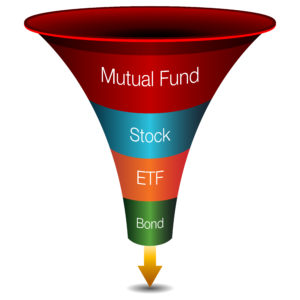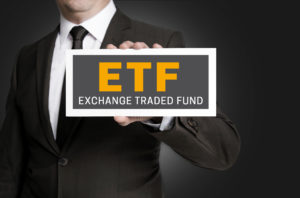 My latest Financial Post column can be found in the print edition of Wednesday’s National Post as well as online right now, under the title The market share battle between ETFs and mutual funds is heating up, as Canadian ETFs pass $100 billion milestone.
My latest Financial Post column can be found in the print edition of Wednesday’s National Post as well as online right now, under the title The market share battle between ETFs and mutual funds is heating up, as Canadian ETFs pass $100 billion milestone.
As noted earlier here on the Hub, the ETF (Exchange-traded Funds) industry recently passed the significant milestone of $100 billion in assets under management. See ETFs break $100 billion milestone in Canada. That’s “Billion” with a B, but is still less than 10% of the $1.1 Trillion (Trillion with a T) that the entrenched and much older mutual fund industry still enjoys.
As an aside, if you have difficulty grasping how big the number “Trillion” is then read a hub post by Ian Campbell: Can you put the number ‘Trillion’ in context?
The FP column asks the question why the huge disparity in Management Expense Ratios (MERs) of mutual funds (i.e. high at around 2.5% per annum) versus ETFs (typically around 0.55% but in some cases as low as 0.4 or 0.5%) hasn’t resulted in even more incursions by the ETF industry into the mutual fund space.
Powerful bank distribution network
One reason is the entrenched positions of the Canadian banks, whose powerful distribution network (i.e. bank branches)allows them to sell their own in-house no-load mutual fund families. Of course, BMO, RBC and now TD all sell ETFs as well but I doubt you’ll see many recommended by your local friendly branch rep any time soon.
As the old saying goes, mutual funds are sold, not bought. ETFs tend to be bought, i.e. sought out and purchased by knowledgeable investors, often directly and on their own via discount brokerages, sometimes with the help of true fee-for service advisers. The books shown in the rotating ads on the right of this site (Findependence Day and A Novel Approach to Financial Independence, all in US and Canadian editions) talk about the so-called Findependence Day Model, which is essentially buying ETFs at a discount broker, possibly with guidance from a fee-for service adviser.
Alternatively, ETFs can be bought via full-service brokerages or increasingly, through fee-based financial planners or advisers. A list of some of the latter can be found at the Guidance section of the Hub.
What’s more likely to effect change is the greater fee disclosure and transparency required by the new regulatory regime known as CRM2. For more on that, see this recent Hub blog entitled Get ready for POS3 and CRM2 deadlines.
Robo-Advisers will raise ETF awareness
Another force to be reckoned with is online investment advisers, popularly known as robo-advisers. Virtually all of them use ETFs as their underlying building blocks, NOT mutual funds. Enter robo-adviser in the Hub’s search engine on the right and you’ll find plenty of background material.
In the FP column, I asked ETF pioneer Som Seif (ex Claymore ETFs, now with Purpose Investments) why mutual funds continue to thrive in the face of the fee and tax advantages of ETFs. Self pointed to the power of the retail bank channel and posed The bigger question of “why mutual funds have not responded with lower fees.”
 That one was answered almost 20 years ago by retirement expert Malcolm Hamilton in the preface to my 1998 book, The Wealthy Boomer: Life After Mutual Funds. “Canadians have only themselves to blame,” he wrote, “We aren’t price sensitive. We either don’t know what we’re paying, or we don’t care. If the customer doesn’t care what the product costs, the producer has no reason to economize.”
That one was answered almost 20 years ago by retirement expert Malcolm Hamilton in the preface to my 1998 book, The Wealthy Boomer: Life After Mutual Funds. “Canadians have only themselves to blame,” he wrote, “We aren’t price sensitive. We either don’t know what we’re paying, or we don’t care. If the customer doesn’t care what the product costs, the producer has no reason to economize.”
But back then, ETFs were barely on the radar. Let’s hope the new CRM2 regulatory regime changes that in 2016!



I think only about 1 out of 20 of my family and friends are interesting in making a serious effort around learning and understanding personal finance and investing concepts like the impact of fees, the existence of ETF’s, active vs passive investing, etc.